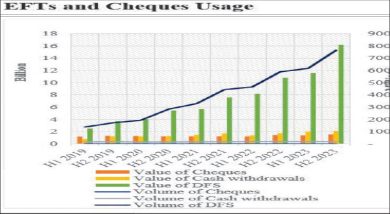Projected surplus not inspiring, say experts
Ministry of Agriculture preliminary crop estimates show a projected 360 000 metric tonnes (MT) maize surplus this season, but experts say this will not be enough to have a positive impact on food prices.
Their fears follow the release of preliminary crop estimates, which show that the country expects to produce 3.56 million MT of the staple grain maize against the national requirement at 3.2 million MT, creating a surplus of 360 000MT.

However, this season’s expected output is 4.1 percent below the 3.7 million MT produced last year, raising fears that food prices will continue to rise amid rising inflation rate currently at 25.9 percent.
They argue that given last year’s surplus at 500 000MT and the fact that maize prices and inflation have risen to record highs, this year’s food prices are expected to be worse.
Speaking in an interview yesterday, Malawi Agriculture Policy Advancement and Transformation Agenda (Mwapata) Institute research fellow Anderson Gondwe said considering that the cost of fertilisers and demand for food remains high due to the on-going war in Ukraine, the surplus offers no hope that prices of the staple grain will ease.
He said: “Globally, food prices have been increasing since 2020 driven by wheat, maize and sunflower largely supplied by Ukraine, but now faced with a global shortage perpetuated by the Russia-Ukraine war.
“Again, there are high expectations that maize will fetch higher prices because of higher fertiliser prices and also due to the fact that the Affordable Inputs Programme has been under pressure.”
On his part, economist Edward Chilima said while the surplus comes amid a challenging season, it is highly unlikely that maize prices will decline to previous post-harvest prices.
Said Chilima: “The excess will only make sense if it will be in the hands of official bodies such as Admarc [Agricultural Development and Marketing Corporation] or NFRA [National Food Reserve Agency].
“Short of this, vendors will sweep the excess in no time and hoard. By hoarding, supply will be affected and prices will remain high.”
He said food inflationary pressures will remain high, adding that the extent of non-food inflation will determine the resultant level of national inflation.
Maize, as part of the food component, has a huge weight at 45.2 percent in the Consumer Price Index, which is an aggregate basket of goods and services used in computing inflation.
Maize prices have been on the rise, increasing by about 300 percent within a year from an average of K9 500 per 50 kg bag in January last year to about K37 000 per 50 kg this year.
Meanwhile, year-on-year headline inflation rate has also been on the rise, moving from 12.1 percent in January 2022 to 25.9 percent in January 2023, according to National Statistical Office (NSO) data.
This has also pushed up the cost of living, now at an average price of K356 108 as at January 2023 from K235 584.
Consumers Association of Malawi executive director John Kapito said in an interview yesterday that maize surpluses have not had a positive impact on prices.
He said: “Last year, there were similar surplus projections and we have ended up witnessing the highest prices of maize and scarcities.
“Government needs to ensure that there is proper management of maize stocks in the country before it starts allowing exports.”
Speaking separately, Grain Traders Association of Malawi president Grace Mijiga Mhango said a lot of maize has been exported to Kenya and Tanzania through informal means.
Her sentiments were shared by Parliamentary Committee on Agriculture chairperson Sameer Suleman who questioned why the country is experiencing maize shortages and high price despite a 500 000MT surplus last season.
“The demand for maize is more than the supply despite the fact that we had a surplus last year. This year will be worse than last year,” he said. Meanwhile, the Malawi Vulnerability Assessment Committee report shows that at least 3.8 million people or 20 percent of the country’s population is expected to face acute food insecurity between January and March this year.





